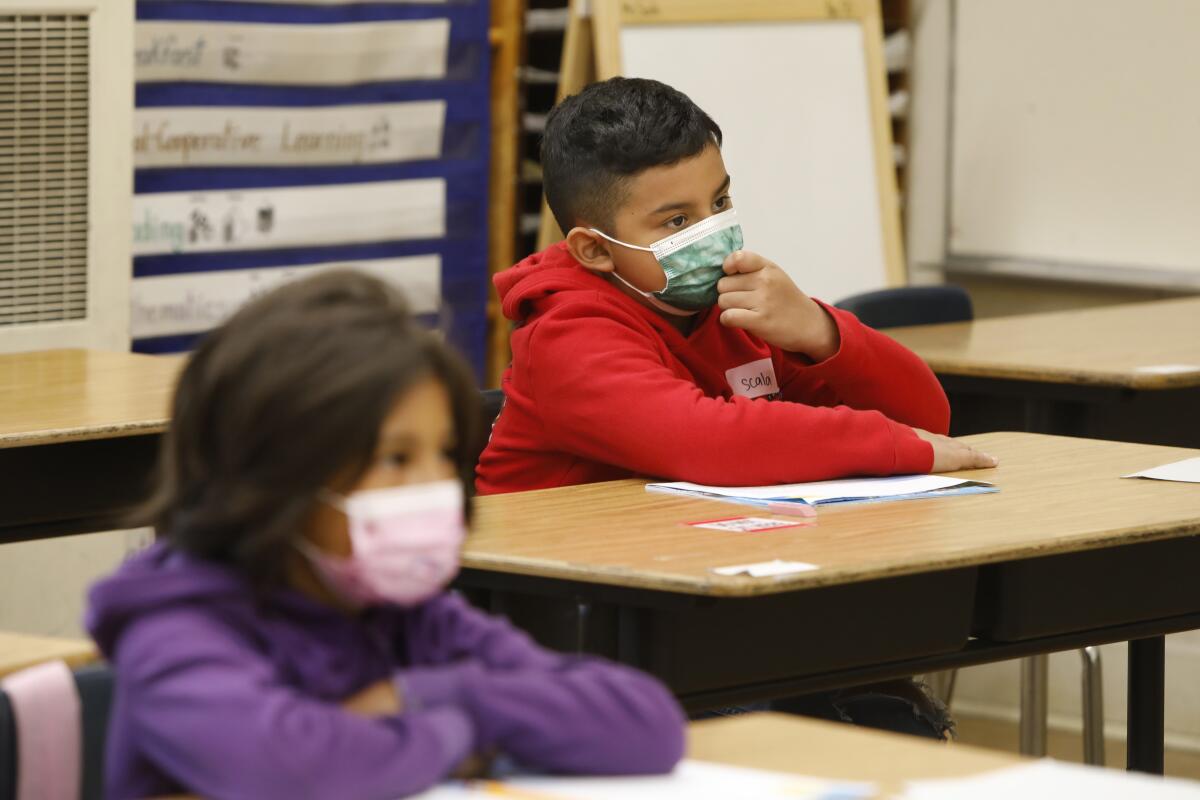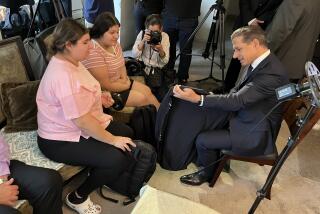Editorial: Masks for all at K-12 schools? Great idea

Aside from people who’ve been vaccinated, kids are generally the least likely group to be seriously sickened by COVID-19 or to transmit it to others. Yet California’s recently announced requirement that K-12 students wear masks on campus or learn remotely makes a lot of sense, and all states should follow suit.
The mask rule has raised eyebrows among those who note the Centers for Disease Control and Prevention’s guidance, which says vaccinated people shouldn’t feel the need to wear masks indoors. (Los Angeles County public health officials beg to differ.) But schools aren’t the local clothing store, and masks are needed for both educational and safety reasons.
Ideally, schools would require all students (and staff) to be vaccinated except for the very few who have a legitimate medical reason for not doing so. But the existing vaccines haven’t been approved for those younger than 12, and even for teens and older people, they are available only through emergency authorization. Until the Food and Drug Administration gives these vaccines final approval, which is likely to occur late this year, it is unclear whether public agencies such as schools can require people to receive them, unlike the standard childhood vaccines that have long been required for California students.
That means a lot of students at schools — all the unvaccinated ones — should be wearing masks, especially in light of the highly contagious Delta variant now spreading through the state. But just try to make that reality stick on a school campus if vaccinated students go without face coverings. The unvaccinated ones will want to be the same, and are likely to strip off their own masks — or vice versa.
Teachers will have the heavy task of trying to catch their students up on the learning they lost during a year and a half of remote lessons. The last thing they need is to become mask monitors, overseeing which students need their masks and which don’t. It’s more effective, and simpler to enforce, when everyone has to wear a mask. Not to mention the arguments and bullying that could occur, such as with Dr. Seuss’ Sneetches, between the masked and unmasked.
At this point, the highest priority for schools has to be getting kids back into physical, not virtual, classrooms, where they generally learn better, receive more services and have the opportunity to socialize. And parents will be more likely to send their children back to campus if they feel it’s a safe environment.
Schools also can serve a helpful public-health function by teaching students about the safety and importance of vaccination, a message they can take back to their families. In Los Angeles Unified School District, there also will be a robust COVID-19 testing program that will help protect the larger population by providing timely results so that the infected can stay at home.
The University of California already requires vaccination for returning students; it can demand compliance despite the lack of final vaccine approval because attending UC is a student’s choice. Education from kindergarten into high school is compulsory.
But once the vaccines receive final FDA approval, the state should require them for all eligible students and staff, just as it does for measles-mumps-rubella immunization. The health of the many cannot be held hostage to the objections of the few.
More to Read
A cure for the common opinion
Get thought-provoking perspectives with our weekly newsletter.
You may occasionally receive promotional content from the Los Angeles Times.






